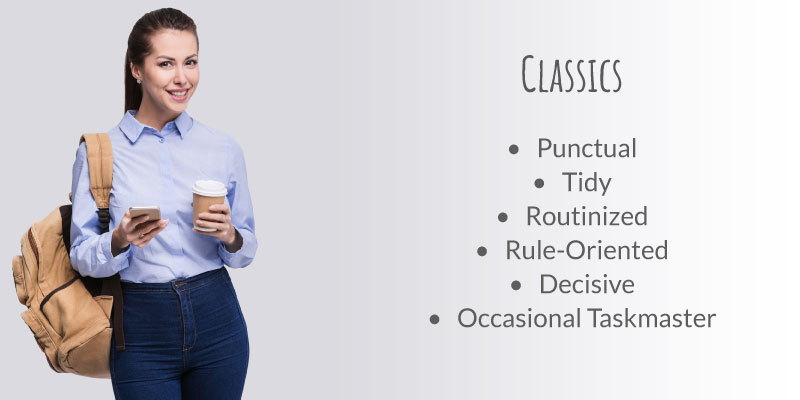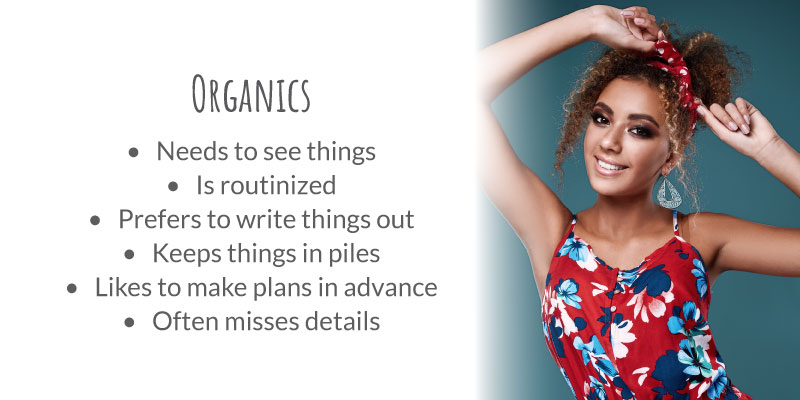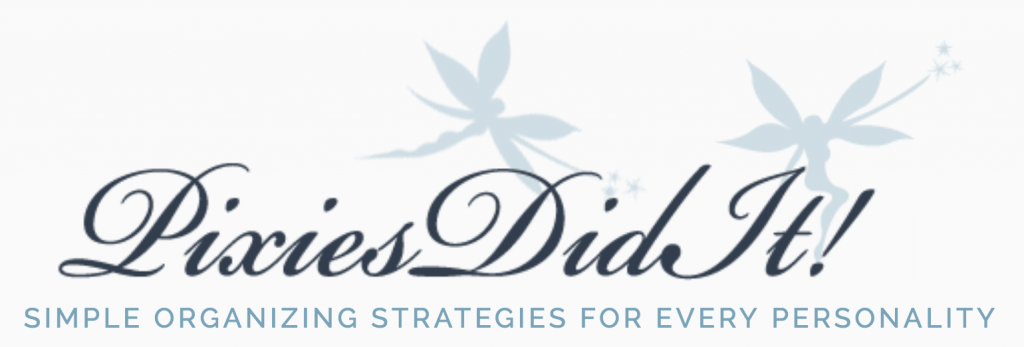Getting Specific: Each Type Personified
As you probably already know, our business is based not only on organizational techniques and tips, but personality types, and using those personality types to best help you organize — YOUR WAY. It’s like Burger King, but healthier (and less greasy). Why do we employ this method? Why not just have one, overarching rule regarding home organization?
We realized that personality types would be the perfect ‘way in’ to figuring out our clients’ habits and way of functioning, both in their homes and at work. Chances are, if you’re a type A personality in life, you don’t leave piles of things in random places at home, and all of the shoes are in a rack or lined up neatly in a closet. If you’re more free-spirited, chances are that if you have a filing cabinet or system, that it isn’t used every day (or even every month). Of course, we are making broad generalizations here, but you can tell a LOT about a person’s organizational tendencies via what kind of personality they have.
 Our idea is that the better you know yourself and how you tend to organize your space, the better you can utilize tips and tricks specifically formulated to help you manage your life. It’s you — but better. We formulated a Pixie Quiz on our website that will help you determine your PixieType. From there, you can buy our book, which outlines in great detail the ways in which different types ought to organize their homes. We include tips on items that will help certain types and hinder others, and we explain why that is. We go through each room in the house, and cover most (if not all) circumstances that require re-organization of some kind — a death in the family, divorce, moving, etc. We have a whole chapter devoted to how different types can cohabitate peacefully, all the while adhering to their own type and respecting each others’ types.
Our idea is that the better you know yourself and how you tend to organize your space, the better you can utilize tips and tricks specifically formulated to help you manage your life. It’s you — but better. We formulated a Pixie Quiz on our website that will help you determine your PixieType. From there, you can buy our book, which outlines in great detail the ways in which different types ought to organize their homes. We include tips on items that will help certain types and hinder others, and we explain why that is. We go through each room in the house, and cover most (if not all) circumstances that require re-organization of some kind — a death in the family, divorce, moving, etc. We have a whole chapter devoted to how different types can cohabitate peacefully, all the while adhering to their own type and respecting each others’ types.
The Quiz
So you’ve taken the quiz, and you know your type. Great! We will go through each type (and subtype) below, but first, let’s talk about what happens when you feel like your type result isn’t quite ‘right’, or you feel that you fall in between two different types. Keep in mind that this is not a scientific psychological test, but more of a quick and general way to place people into specific categories. If you feel you’re ‘in between’ types, you probably are, and that’s not strange or surprising — things are more gray than black and white here. Our hope is that you’ll find something in our quiz or book that will help you become better organized in a way that works for you.
The Types: A Rundown

The Classic type is separated into two subgroups: Classic Structure and Classic Freedom. Here are the attributes you have if you fall into the Classic Structure category:
- Punctual
- Tidy
- Routinized
- Rule-Oriented
- Decisive
- Occasional Taskmaster
Here are the attributes you have if you fall into the Classic Freedom category:
- Warm
- Quintessential Homemaker
- Decisive
- Routinized
- Punctual
- Tidy
Classic Structures use logic when they make decisions, while Classic Freedoms tend to be more subjective. For example, when it’s time to purge clutter, a Classic Structure will have no trouble deciding what stays and what goes, (and where the ‘stays’ pile will go once the ‘goes’ pile has been removed from the premises!) whereas the Classic Freedom has a bit more trouble deciding what to keep and what to toss — mainly due to worrying about hurting someone’s feelings or stepping on someone’s toes. Let’s just say the Classic Structure can be a bit more…ruthless than the Classic Freedom, and that is the jist of what separates the two types.
Funs
The Fun type is separated into two subgroups: Fun Structure and Fun Freedom.
Here are the attributes you have if you fall into the Fun Structure category:
- Selectively organized
- Not into strict schedules
- Spontaneous
- Habitual rather than routinized
- Piles with practicality
- Excellent at getting rid of clutter (uses logic to make decisions)
Here are the attributes if you fall into the Fun Freedom category:
(This type is basically the same as Fun Structure, only lacking the practical side of things.)
- Orderly when it suits you
- Doesn’t mind routine but can’t have it as a daily diet
- Spontaneously productive
- Is able to file with an easy filing system but will eventually start piling
Fun Structures and Fun Freedoms are very similar when it comes to most things. The only real difference between them is that Fun Freedoms lack the capability to declutter properly because they tend to procrastinate.

Organic types, like the rest of the types, are classified into two separate subtypes: Organic Structure and Organic Freedom.
Here are the attributes you may have if you happen to be an Organic Structure:
- Needs to see things; has a visual memory
- Is routinized
- Prefers to write out his/her To Do lists
- Keeps things in piles
- Likes to make plans in advance and keeps a schedule
- Often misses details
Here are the attributes you may have if you happen to be an Organic Freedom:
- Prefers to have a flexible schedule, but can handle appointments if they happen on a consistent basis
- Needs to create his/her own routine, as forced (dull) routines are boring for them
- Has a visual memory
- Keeps things in piles
- Prefers to keep his/her To Do lists in his/her head rather than writing it out
- Likes to keep things out rather than hidden away in a closet or cabinet
Where Organic Structures are practical, Organic Freedoms are not. Where Organic Structures like to keep things relatively tidy when they can, Organic Freedoms do not make a tidy home their priority, and are much more low-maintenance. Organics, as a type, have the most difficulty out of all the types in decluttering and purging. If purging is necessary (and it almost always is, in any house or situation) we suggest Organics hire outside help.
Smarts
Smarts are categorized into Smart Structures and Smart Freedoms.
If you are a Smart Structure, you:
- Have a visual memory
- Often miss details
- Like to make plans in advance and have a set schedule
- Pile things
- Write out your To Do lists
If you are a Smart Freedom, you:
- Need your schedule to be flexible
- Work best in the moment and spontaneously
- Have a visual memory
- Pile things (heavily)
- Prefer a spontaneous routine, integrated with imaginative creativity
- Like to keep To Do lists in your head
The main difference between the two Smart types is that the Smart Structure craves organization and structure (hence the label), and Smart Freedoms prefer to use their imaginations and get off on spontaneous creativity. Otherwise, these types are similar.
So what if you find yourself between two types, or you just don’t jive with the results of the Pixie Quiz? Don’t worry. Go through the book and choose the organization technique that best suits YOU. After all, that’s what Pixies are all about: Organizing YOUR way…. And loving it!
